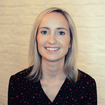Rosacea, also known as Acne Rosacea, is a long-term skin condition affecting the face. Although it can be found in both males and females it is mostly seen in females. First signs of Rosacea can start around the age of 30 with mild symptoms progressing into severe cases sporadically throughout life.
The cause of Rosacea is unknown, and there is no current cure. However, with the right skincare routine, used in the right way, the symptoms of rosacea can be controlled and supressed. Looking for assistance with your Rosacea skincare routine now? Why not book a free online video skincare consultation with one of our Skin Experts? Tap the button below, or read on for more information on the symptoms, potential causes and treatments for Rosacea.
In this article, we explain what Rosacea is, the symptoms you may suffer from and the common causes which could flare your Rosacea symptoms.
What does Rosacea look like?

Mild Rosacea can start with flushing of the skin. However, more severe cases can find coarse texture with large open pores. Rosacea can also identify itself in a butterfly pattern across the nose and cheeks with an outbreak of spots. You may also have dilated capillaries which are more prominent. These may give off a purplish appearance in the affected areas. Swelling and inflammation can occur, leaving your skin feeling hot to touch and sensitive. These signs and symptoms can flare for a number of days to weeks, and then suddenly disappear until your next outbreak.
Other symptoms you may experience are:
- Stinging and burning of your skin.
- Patches of rough, dry skin.
- Larger pores.
- Bumps on your eyelids.
- A swollen nose.
- Broken blood vessels on your eyelids and problems with sight.
What causes Rosacea?

Although we are still unsure of a root cause, anything that causes your Rosacea to flare is called a trigger. Physical triggers such as spicy foods and alcohol create a vasodilation effect (the widening of your blood vessels) and this aggravates the skin. Things that make your face flush such as stress, a change in weather from cold to hot, sun exposure and exercise all will cause your breakout to go from mild to severe. If you can find your triggers, you will have more chance of you controlling the severity of your breakout.
Although no one knows exactly what causes Rosacea, a few things that can play a role are:
- Genetics – Rosacea can often run in families, so it might be worth asking your family members if this is something they have issues with.
- Blood vessel issues – Sun damage could cause your blood vessels to get wider, for example.
- Mites – If you didn’t already know this, then we're sorry! Tiny insects live on your face and usually aren’t harmful to you or your skin. However, some people may have a sensitivity to these mites or may have more than usual, which could irritate their skin.
- Bacteria – A bacteria type named H. pylori normally lives in your gut. Some studies have suggested that this germ can raise a digestive hormone called gastrin. This might cause your skin to look flushed.
Interestingly, some things about you may make it more likely that you could develop Rosacea. Your chances of getting the skin condition go up if you:
- Have light skin, blonde hair and blue eyes.
- Are between the ages of 30-50.
- Are female.
- Have family members with Rosacea.
- Have had severe acne.
- If you smoke.
How to control your Rosacea

Don’t worry! There are things you can do to help with the symptoms of Rosacea. If you know your triggers, such as spicy food or alcohol, try to avoid those as much as possible. You may be prescribed topical or oral medication from your Doctor if your symptoms are particularly uncomfortable. Most importantly, it is worthwhile reviewing your skincare product regime. Tackling skin health with a holistic approach is likely to give the best results. For example, our in-house GP specialises in Dermatology and Aesthetic Medicine and can advise on treatment regimes and combinations where needed.
Other things you could do to fade the redness on your skin:
Use facial sunscreen
Use a broad spectrum with at least an SPF of 30 or higher sunscreen every day. In the sun, wear a hat or something to protect your face. Keeping your skin cool and protected against sun damage can prevent a Rosacea flare up.
Use only gentle skincare products
Our Skin Experts will be able to advise you the best skincare products to deal with your symptoms and prevent exacerbation of your symptoms.
You can read our blog on the best medical-grade skincare products for Rosacea-prone skin here.
It's also best to ensure you're not using too many harsh skincare ingredients. We have the rundown on the best skincare ingredients for Rosacea skincare here.
In summary
Unfortunately we know that Rosacea cannot be cured at the moment. However, with the correct skincare routine, you can control the symptoms and signs, reduce flare-ups and improve your skin’s barrier function.
If your symptoms are severe, it may be beneficial for you to visit your GP and begin a combination of prescription and skincare products. A number of medical-grade skincare products are also prescription-only and can be prescribed to manage your Rosacea symptoms.
Looking for help managing your Rosacea symptoms? Why not book a free online video skincare consultation with one of our Skin Experts? We can help you to build the right skincare products for your regime and guide you on how to use them along the way, for free.




